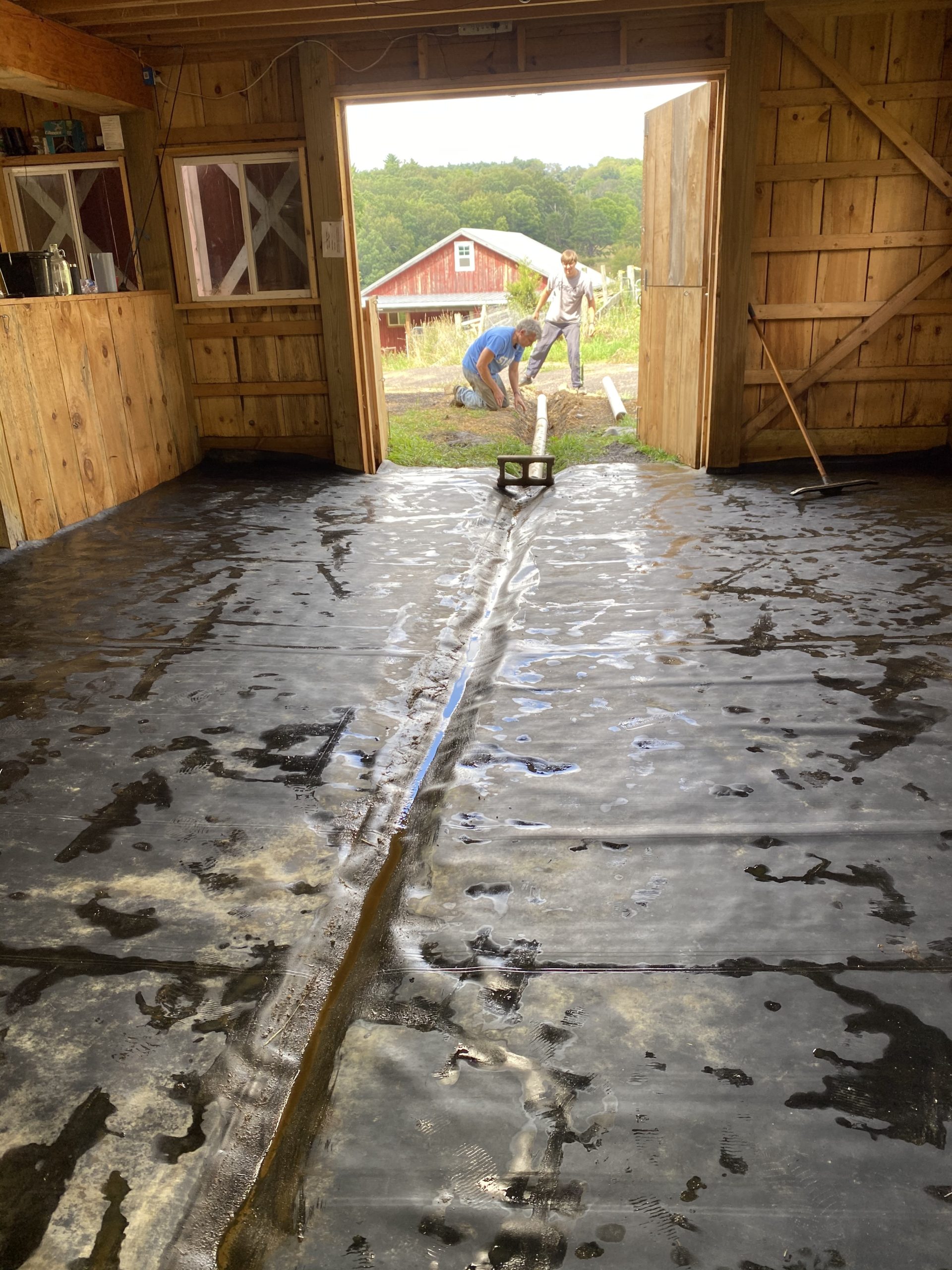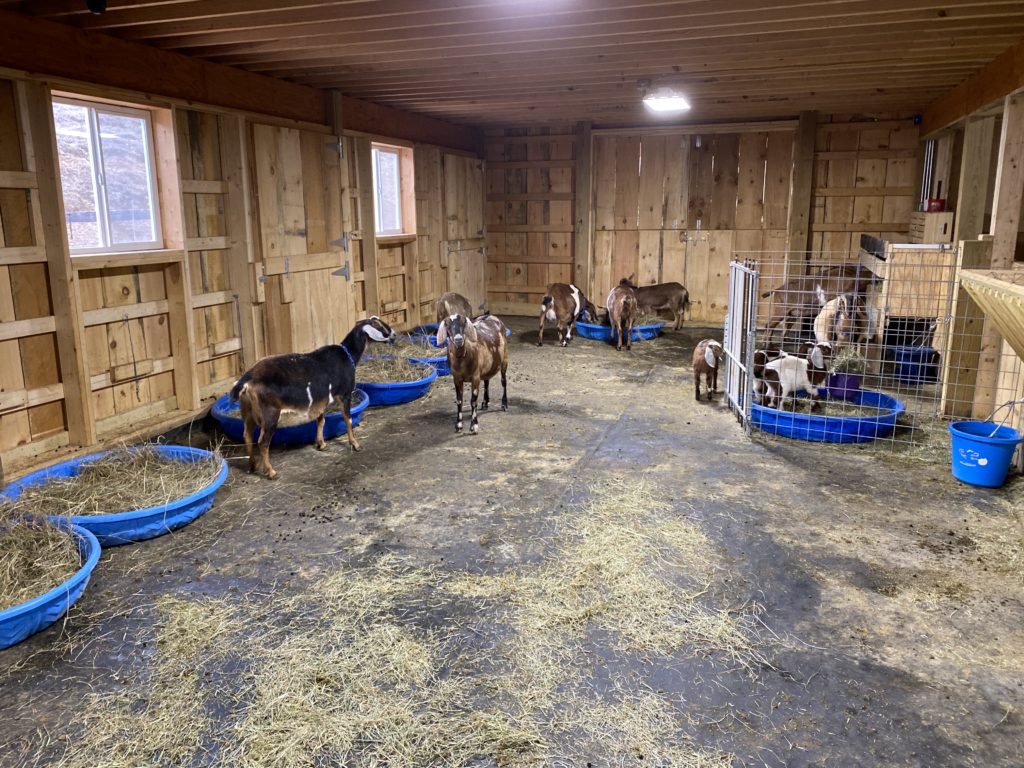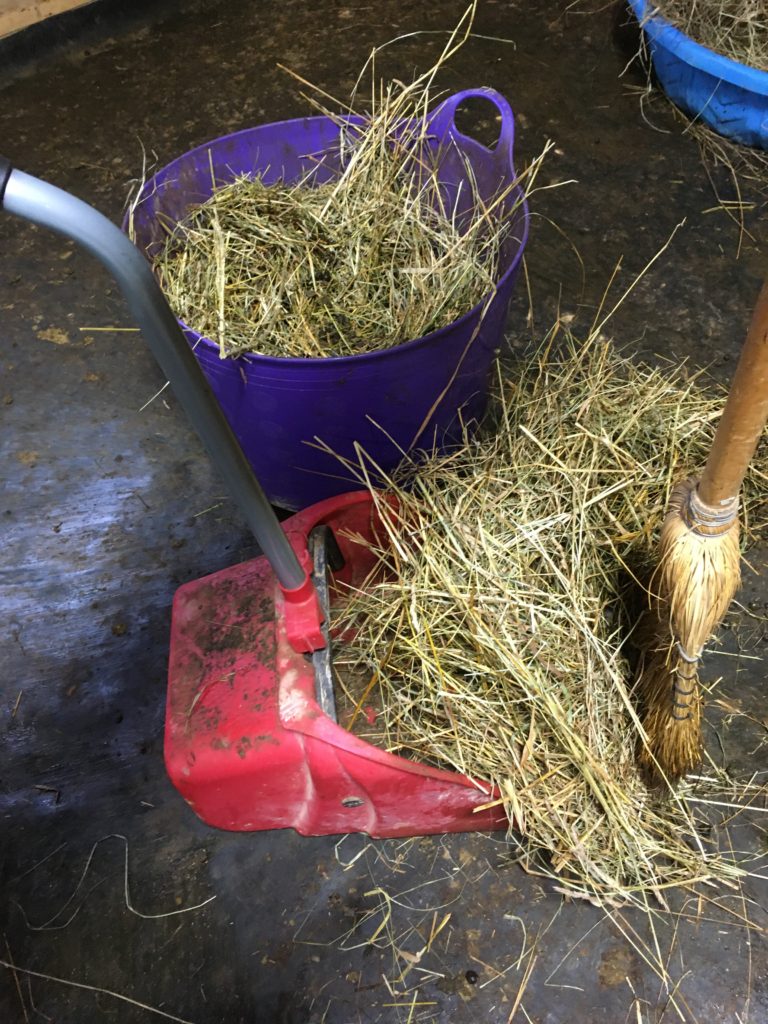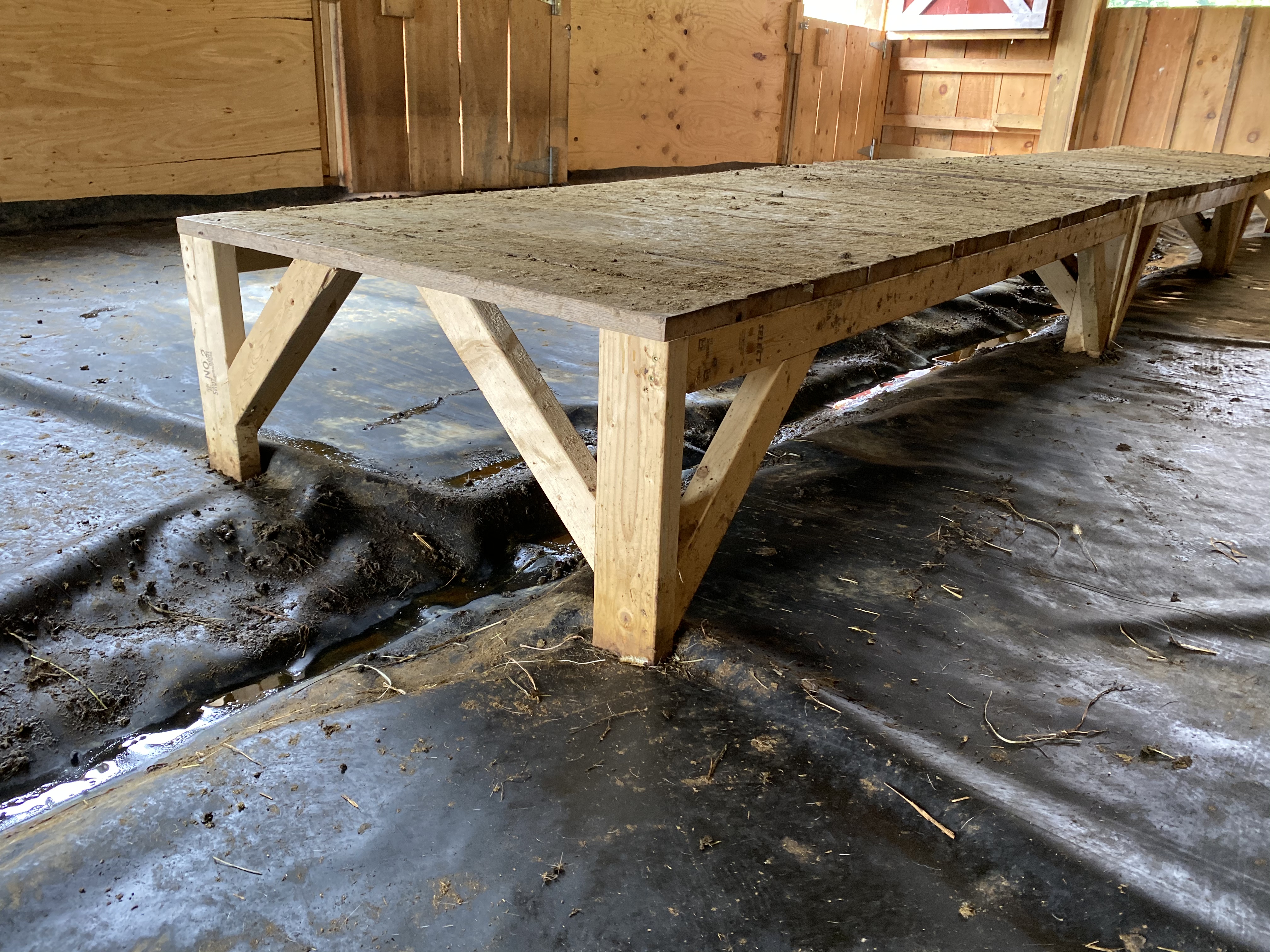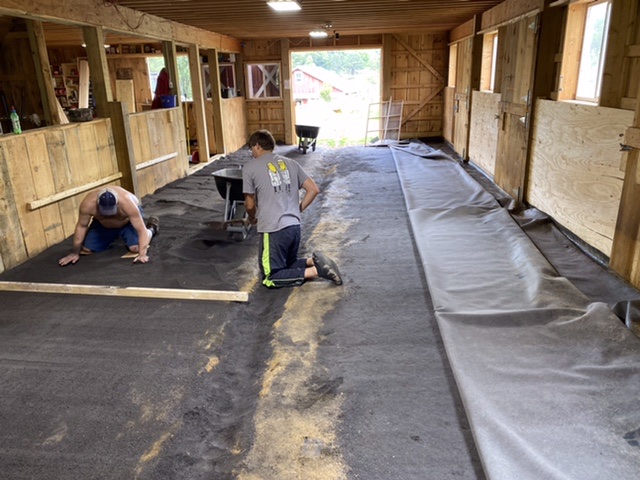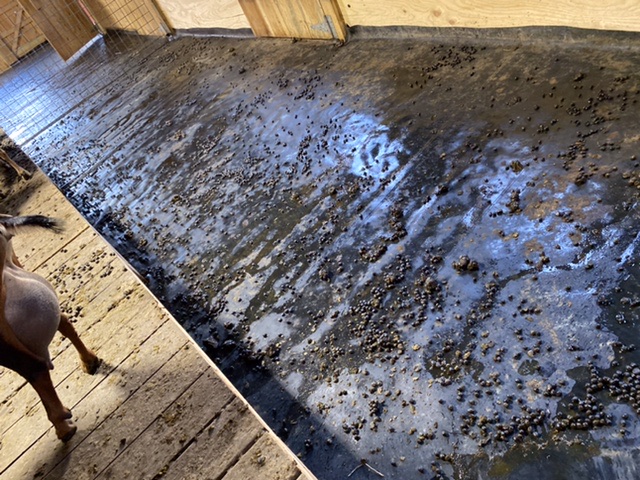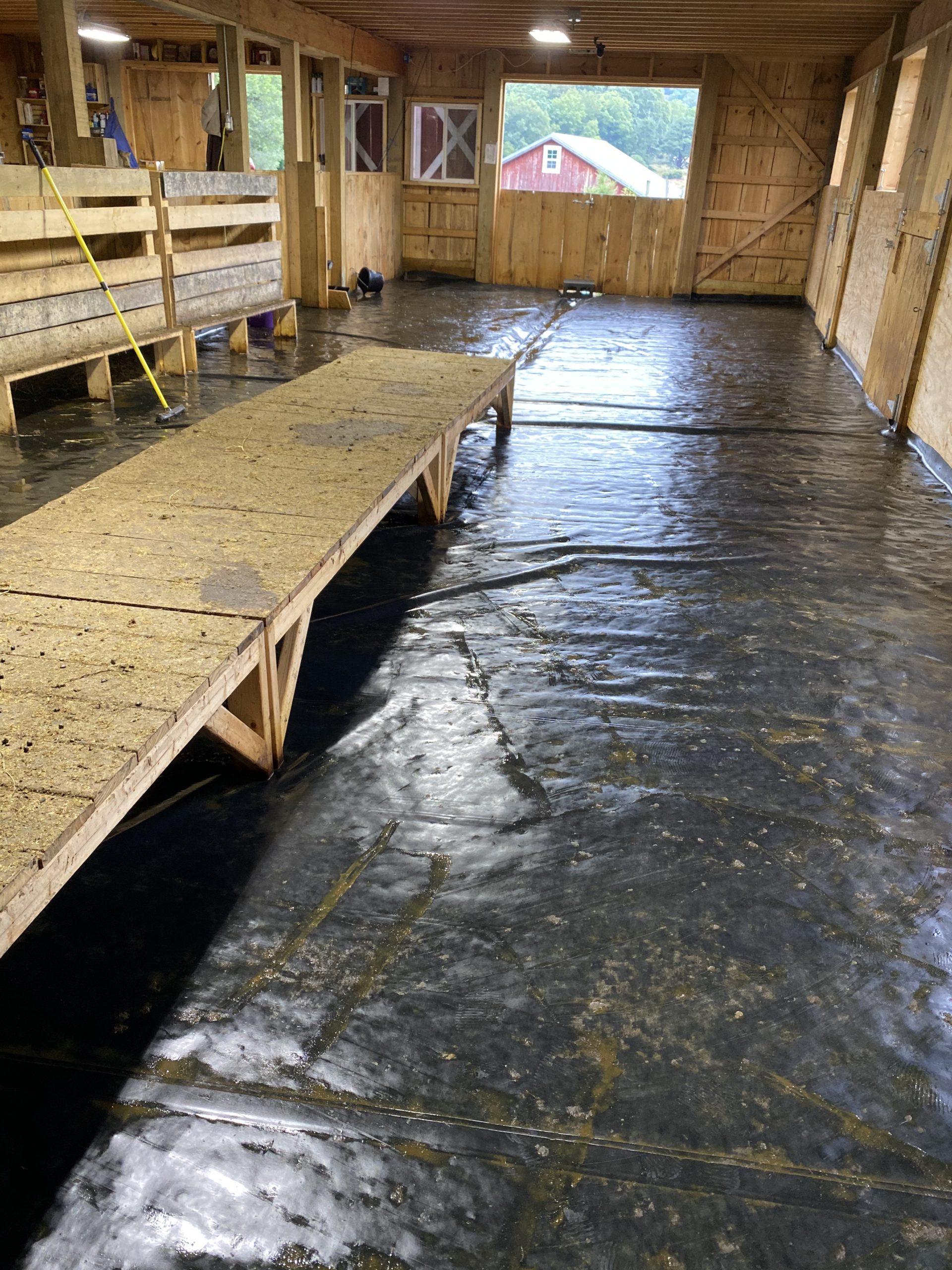You know how it is. You try one thing, and it’s good. But then it has problems. And you think, “There has to be a better way!” If you follow this blog, you know that I’ve tried floor bunks with deep bedding and pools with deep bedding atop our rubber barn floor. There were definitely pros to these, but there were cons as well.
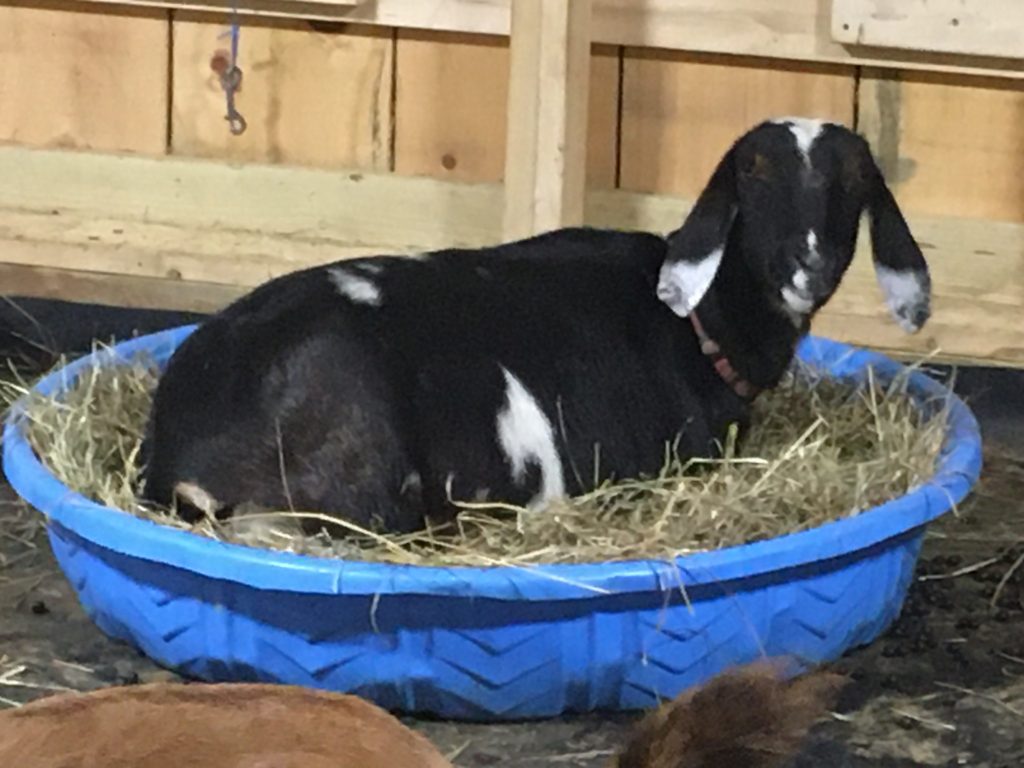
The pros were that they kept our girls warm, and they nestled into them with their growing kids. We had enough that there was plenty of choice.
Thing is, the girls did pee and poo in them… so, maintenance. Sigh. The bunks got too heavy to muck at all easily. The pools, we had to drag out every week or two (some pools were more popular than others) and then redo them: pellets for absorption of pee, PDZ powder, and then a starting layer of bedding hay. (We bought year-old hay for bedding only.)
Pools are okay… They really are! And I still recommend them. BUT: they’re work, and we like to minimize work where we can! They also have the expenses of pellets, PDZ, and bedding hay. So, we’re trying something new: tables.
What are Tables?
Some people call them bunks. Ours are more like tables, so that’s what we call them.
We built them all identical and freestanding, so we can move them around in various configurations… because, if you’ve been following us for any length of time, you know that “modular is us.” We have configured them all in a row, or we have put them (more successfully) into blocks. (See pictures below.)
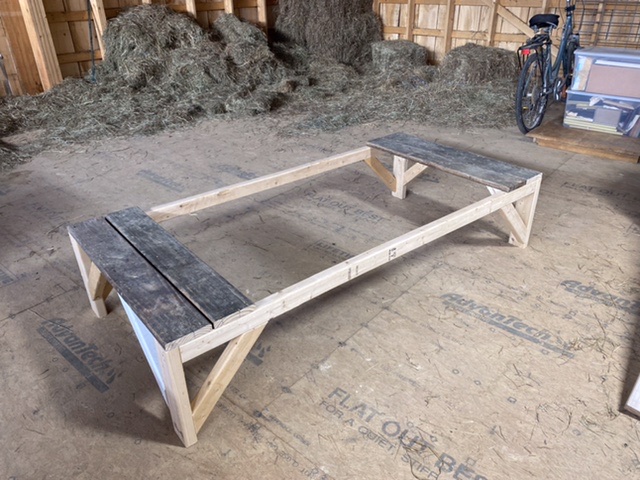
This picture shows the basic framing. The table top is 6’ x 3’. The framing is 2 x 4 legs that are 15” tall, with 2 x 3’s for the braces and horizontal struts. We have been using old fence boards for the surfaces.
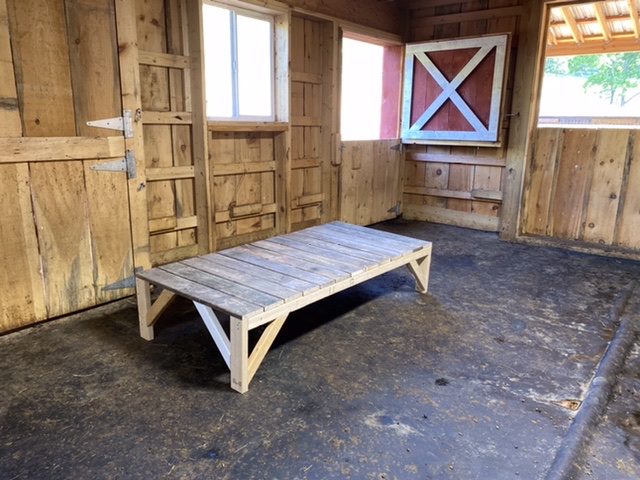
I have found, by trial and error, that it’s best to keep the seams between boards snug. The goats will pee on these tables, but the pee will go down through tight seams, and the poo will not, which is beneficial on the back, because there’s less to bend and scoop when mucking.
Here’s the finished product, before goaty hooves (and hinds) have touched it.
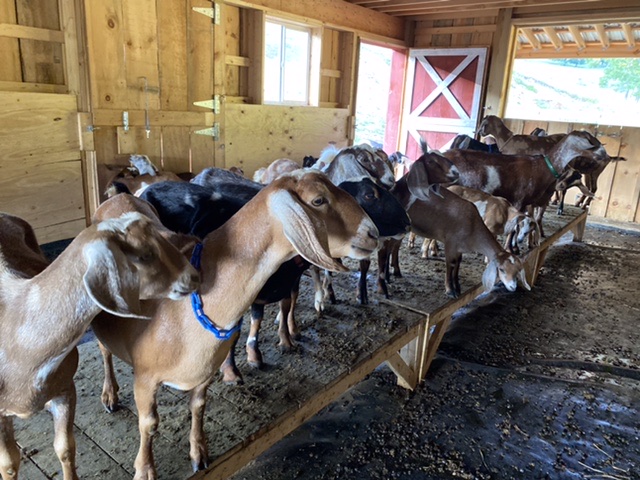
As I said above, at first we put the tables in a line… this picture is taken first thing in the morning… all the girls are waiting to be milked.
As you see, they do poo on the tables at night. But, their udders seem to be just as clean in the morning as they were with pools.
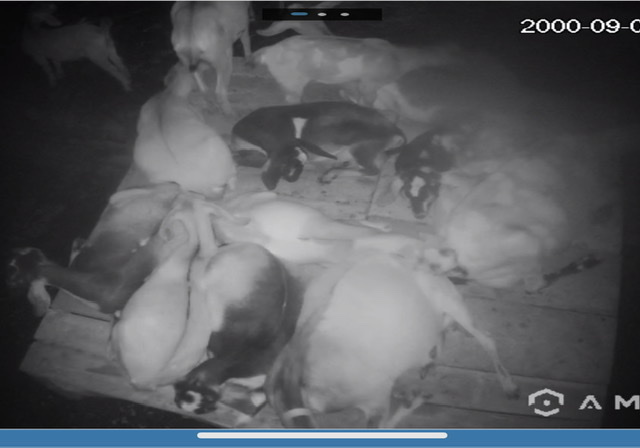
Recently, we changed these tabes to be side by side in a square configuration. This is a night picture via video cam. You can see that it’s a pile of goats, grouped in families… I just love this picture!
Some of the does don’t want to sleep on the tables, but it’s still warm weather. We believe that the wood will be warmer than the rubber floor come freezing weather.
We don’t think we’ll need to bed with hay, but we may use heat lamps in the coldest weather, mounted above these tables.
